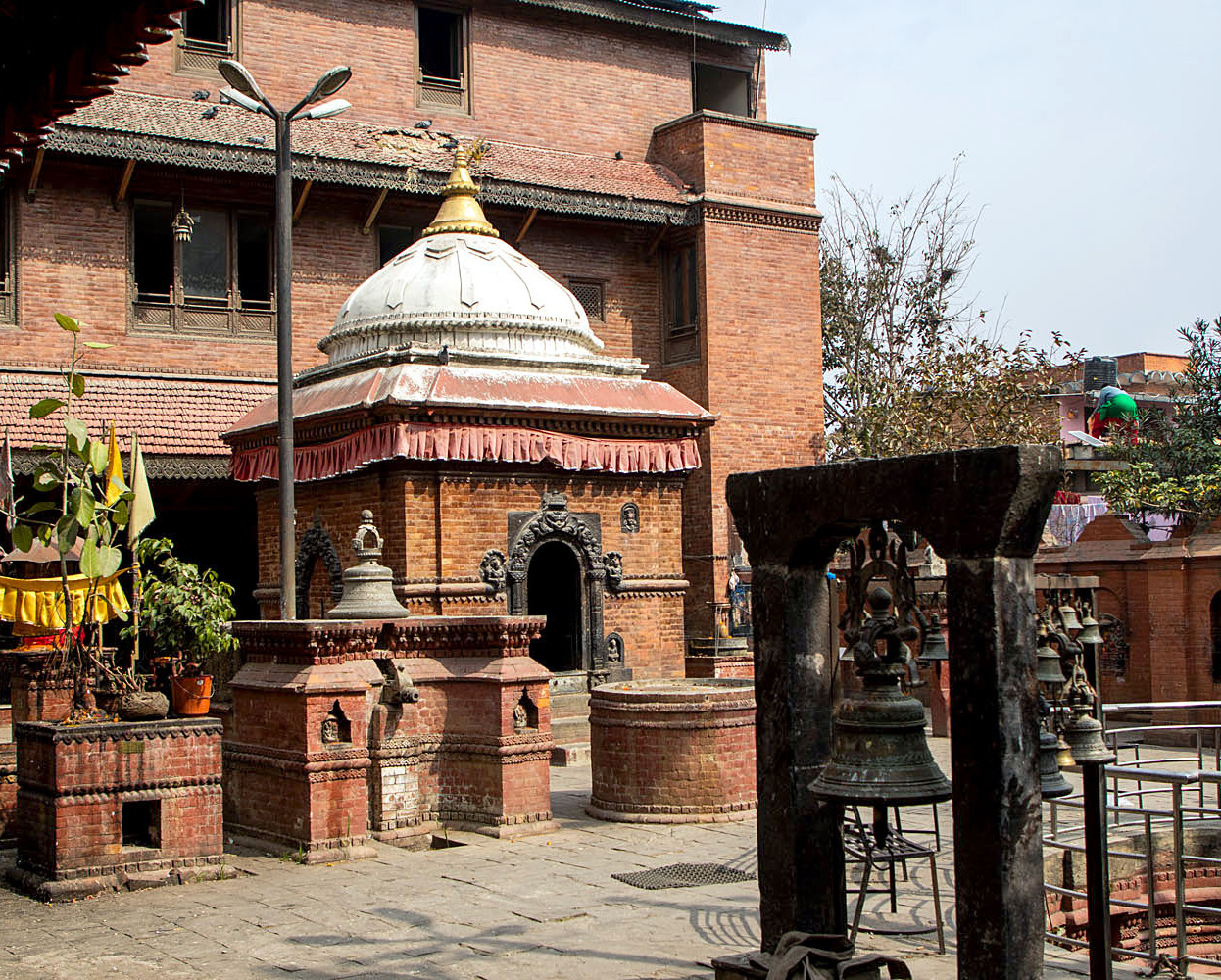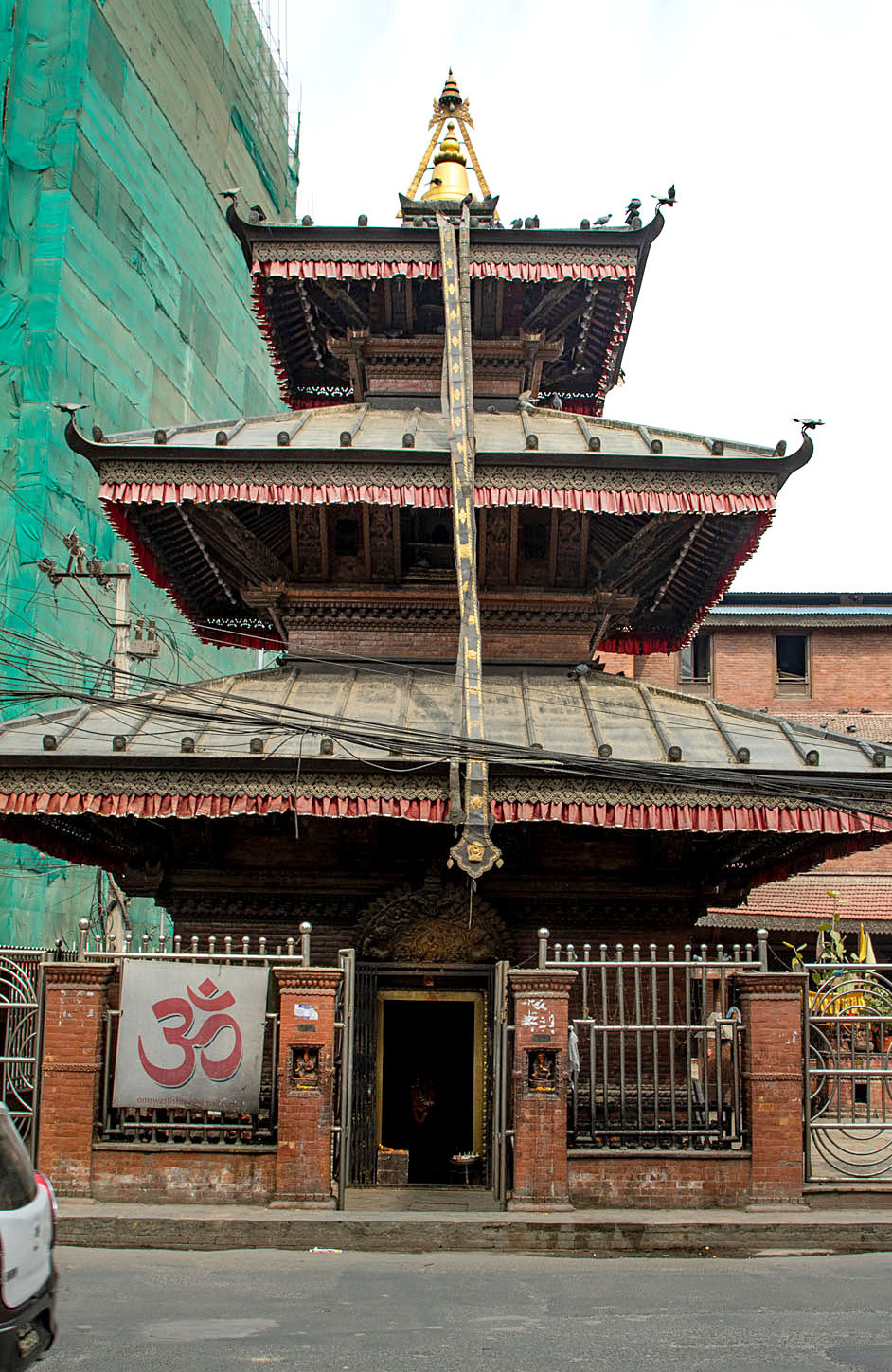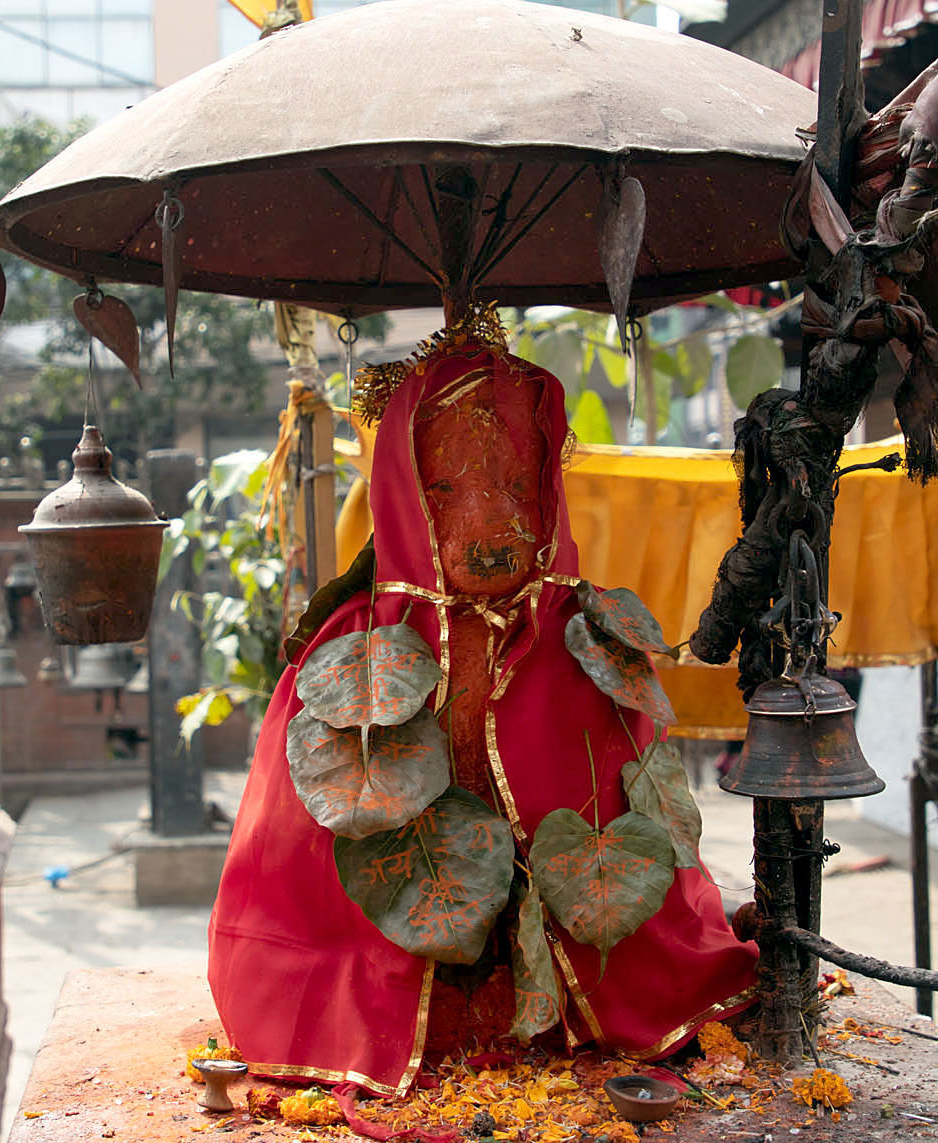If you have been to Naxal chowk, which is also known as Bhagawati Bahal, you must have seen a pagoda-style temple situated right at the four-way junction.
This is the temple of Goddess Naxal Bhagawati, one of the four Bhagawati sisters. The three other sisters are Shova Bhagawati (whose temple is located at Chamati, bank of Bishnumati river), Nala Bhagawati (Nala Village, Kavre), and Palanchowk Bhagawati (Panchkhal, Kavre). All these temples house an idol of Goddess Bhagawati.
The history of these temples can be traced back to the fifth century AD and the reign of Lichchhavis. According to a legend, Mandev, a famous Lichchhavi ruler, decided to meditate at a monastery in Sankhu, leaving the responsibility of administration to his mother Nawa Sagar. The religious mother found it to be an opportune moment to establish the four Bhagawatis.

Apparently, Nawa Sagar got the craftsmen to first build Palanchowk Bhagawati with their right hands. Then, so that they could not replicate its design, she had their right hands chopped off. The artists then built Nala Bhagawati with their left hands. After this, their left hands were cut off too, and they then built Naxal Bhagawati with their right legs and, finally, when even their right legs were severed from their bodies, they built the Shova Bhagawati with their left legs.
Since its inauguration a Karmacharya priest has always presided over the Naxal Bhagawati. Following the demise nine years ago of their father, also a former priest, 40-year-old Dinesh Karmacharya has been working there as a priest alongside his brother Rabindra.
Unlike the vedic rites performed at most other temples, the pooja performed by Karmacharyas at Naxal Bhagawati follows the tantric method of worship. This method of praying and appeasing Goddess Bhagawati has been passed down generations in the Karmacharya family since the fifth century.
Devotees throng to Naxal Bhagawati during the Navaratri period of the annual Dashain festival. According to Hindu scriptures, Goddess Bhagawati came to be known as Goddess Durga after defeating demons in a fierce battle. “During Navaratri, which marks the victory of the Goddess Durga over demons, a special pooja is performed here in the presence of big crowds,” says Karmacharya.

Similarly, Ghode Jatra and Chaite Dashain are other two popular occasions when devotees visit Naxal Bhagawati temple.
Kunti Subedi, 45, who has been taking care of the temple for past 17 years, informs that in normal course the temple is more crowded on Saturdays. But the tantric pooja is performed every day, and devotees sacrifice different animals to please the goddess and fulfil their wishes.
It is also believed that doing pooja and worship at Naxal Bhagawati protects you from bad spirits.
The temple premises also houses the Shree Naxal Bhagawati Bhajan Mandal, a musical group. Established in 1991, the group conducts bhajans on special occasions.
Also inside the same premises are a small temple of Lord Shiva, another one of Radha Krishna, and a third one built with idols brought from Rajasthan, India.
According to Dinesh Karmacharaya, the priest, the number of devotees at the temple has dwindled in recent times.

Prakash Pokharel, 54, a Baluwatar resident, has been regularly visiting the temple on his way to office, for over 20 years. He says worshipping Goddess Bhagawati keeps him on the right track. Pokharel says he has also noticed the number of devotees at the temple shrinking. “Two decades ago, people had strong religious beliefs but now their faith is not as strong which is perhaps why fewer people visit this place now,” he says.
Sabina Shrestha, 24, currently lives in Basundhara, Kathmandu, and visits the temple whenever she passes Naxal. Shrestha says although she is relatively young religious faith is still important for her.
Taking care of this religious and cultural site is the Naxal Bhagawati Samudayik Sadan, a 13-member committee appointed every three years. Says Ashok Rajkarnikar, its president, the group's main responsibility is to renovate and repair what is damaged inside temple premises and to maintain overall cleanliness.
But how does the committee put together the needed expenses? “We rent out two shutters and a hall inside temple premises for different occasions and ceremonies,” replies Rajkarnikar. “The collected funds are used for temple preservation and other expenses.”
The 2015 earthquakes had slightly damaged the temple. But it has now been fully renovated and strengthened.
The temple opens at 6 am and closes at 7 pm. It is also closed from 2-5 pm.











